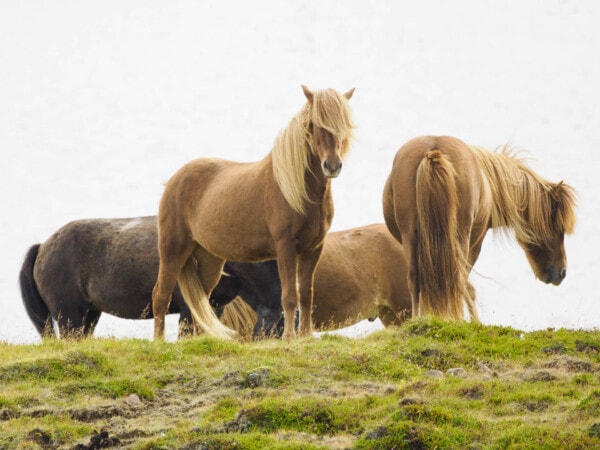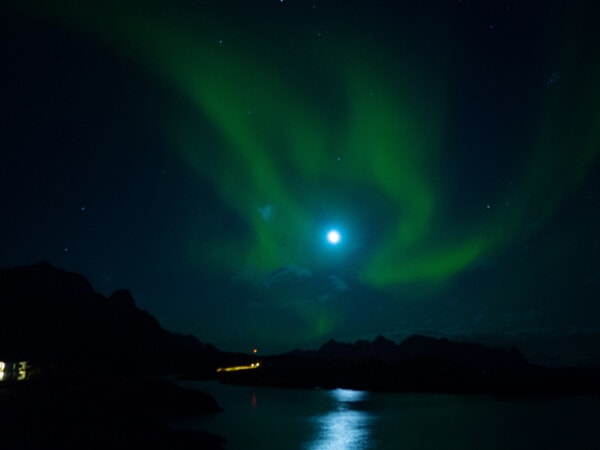“You didn’t go to the Blue Lagoon?” a friend exclaimed, astonished.
Not surprising, given Teetotaller Beach is across the road from where we live, and our feet haven’t touched its sandy bottom for twenty years.
At our age we’re mostly done with alpha tourism, marketers and influencers conspiring on MUST-SEE, TOP-10 lists. We no longer suffer from FOMO (you know, Fear Of Missing Out). And with time past far exceeding time ahead, we’re more discriminating in how we spend our days.
Plus, you’ll spend 8.990 Icelandic Króna (ISK), almost $90 Canadian, each, for an Insta dip into the waters of the Blue Lagoon. If, that is, you were savvy enough to have reserved your soak days in advance; Blue Lagoon is usually fully booked year-round.
After you’ve queued, which some say may take an hour, you’ll share your two-hour water experience with LOTS of other people. On an average day, the Blue Lagoon sees 6,300 visitors—more in high season.
One more thing. I knew about its luxury wellness spa, fancy hotel, gourmet restaurant and conference rooms, but I was unaware of the view behind the Blue Lagoon—a massive geothermal power plant with a conglomeration of ugly infrastructure, smoking stacks and grey buildings. The plant’s residual energy is the heating source for this manmade pool. Ah, the wonders of Photoshop and colour-enhancing filters that turn milky silica into 172 Lagoon Blue—yes, there is a lighting gel called that.
Still, one cannot go to Iceland without soaking in thermal pools, right?
We dipped into a few on hiking trails. Small and free, they were not uncrowded, either.
And we did spring for a visit to the Forest Lagoon that opened just months before we arrived, a geothermal spa resort tucked away in the Vaðlaskógur woodlands of Northern Iceland with views of the Eyjafjordur fjord.

The geothermal water in the Forest Lagoon is natural, sourced from the mountainside behind. The hot spring was discovered accidentally by construction crews working on a tunnel in 2014 to connect the main city of northern Iceland, Akureyri, with the town of Húsavik.
When Sigríður Hammer and her husband Finnur Aðalbjörnsson heard about the discovery, they bought 250 hectares of land, acquired the rights to use the water and began construction of the Forest Lagoon in the summer of 2021. It opened a year later.
Basalt Architects, the company that worked on the design of the Blue Lagoon, has seamlessly integrated the natural hot springs and the surrounding rock and forest greenery of birch, fir and pine to create a soothing experience. A feature wall is formed from exposed basalt rock cut directly into the mountain. “Trees grow up and out of the water and even jut through the middle of buildings,” writes Emma Ticker. ”Grass roofing appears to grow straight out of the rocky cliff it sits up against. Although located close to a road—with the city of Akureyri a short drive away—Basalt has situated key parts of the spa close to flowing water to drown out any background noise.”
Only one-seventh the size of “Big Blue,” the Forest Lagoon includes two infinity pools, the larger one heated to 39°C , the smaller raised bath two degrees hotter. With twenty-seven outlets pumping in geothermal water, no cold patches will shock you. Unlike the Blue Lagoon, the water doesn’t contain silica that turns it a bluish-grey. But the manager of Forest Lagoon, Tinna Jóhannsdóttir, claims it has the same beauty-boosting minerals from millennia-old basalt rocks as those in the Blue Lagoon. (Perhaps our hour-long stay was too short to acquire this benefit.)
On the Saturday we were there, the facility, which accommodates up to 200 visitors at a time and is open until midnight, was maybe half full. Forest Lagoon was intended to attract plenty of locals. Certainly, Icelandic was the prominent language we heard in the pools and change rooms. (The powerful showers, their faucets set at a height for towering Icelandic women, and the stone sinks are striking features.) The Forest Lagoon website suggests you reserve in advance. We had a multiplicity of times to choose from when we booked—earlier that morning.
When you’ve had enough of soaking in the hot springs, you can dip into the cold pool where natural springwater trickles in from the mountain hillside. We ended our stay in the wooden sauna, its glass front looking onto the steaming hot springs and beyond to the forest and snow-ridged mountains, and then enjoyed a nice lunch in the Skógur bistro.
Did I mention the Forest lagoon’s rate for jubilados (67+ years of age) is 4.990 ISK, about half the price charged by its celebrity sister?
My only suggestion?The bracelets Forest Lagoon hands out at the cash desk to use for opening and closing lockers and paying for drinks should be green, not blue.
Navigation
Tamsett, Maxine. “Iceland’s new Forest Lagoon spa immerses visitors among the trees.” CNN. February 22, 2022.
Tucker, Emma. “Iceland’s Blue Lagoon architects have designed a spectacular forest spa in the country.” The Spaces. A digital platform reporting on the best buildings across the globe that are changing the way we interact with the world.

















4 Responses
Nothing like a dip in a hot pool to sooth those aching limbs following a hike or any form of physical activity.
Nice story and pictures 👍👍👍
Imagine how great it would feel in wintertime.
Very cool….
Architecturally, a beauty and physically, such a pleasant experience.